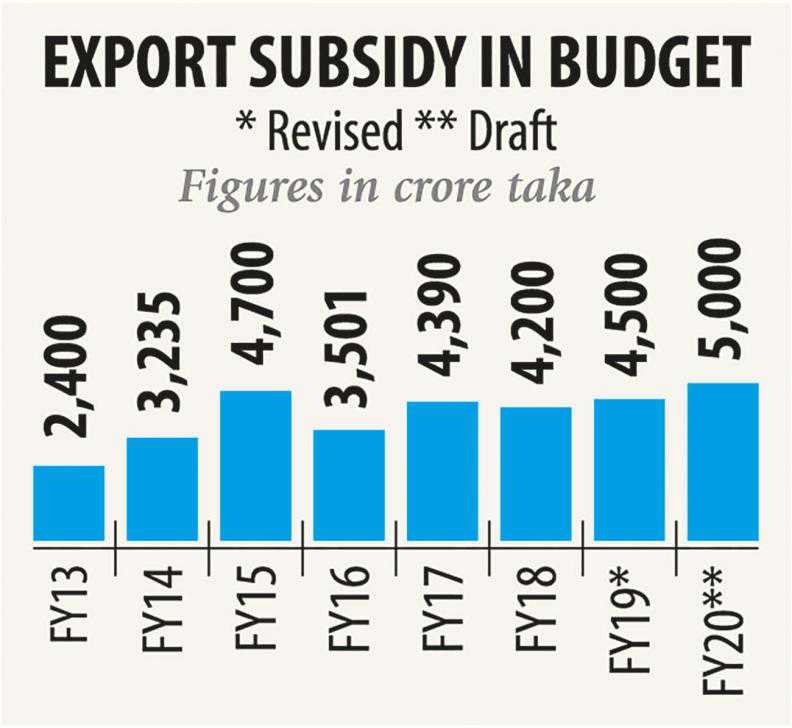Exporters may get more cash incentives

The government mulls over increasing the cash incentive for exports by one percentage point as it looks to motivate exporters to leverage the sudden opportunities presented by the US-China trade war.
Currently, 26 sectors are provided with cash incentives ranging from 2 percent to 20 percent of their export proceeds to encourage higher shipments.
But garment exporters, who fetch more than 80 percent of the country’s export receipts, demanded more cash incentives in the incoming fiscal year to tide them through the rising costs amid implementation of the new wage scale in the industry.
The finance ministry though is planning to extend the facility to all sectors as the escalating US-China trade war has suddenly expanded Bangladesh’s export market.
The export growth, which slowed down last fiscal year, has started looking up again this fiscal year thanks to the trade war kick-started by US President Donald Trump in 2018.
In the first ten months of fiscal 2018-19, export receipts soared 11.6 percent year-on-year in contrast to 6.41 percent registered a year earlier, according to data from the Bangladesh Bank.
Like every year, the government allocated Tk 4,500 crore for cash incentive purpose in the current budget.
Of the amount, Tk 500 crore went to the jute sector and the other Tk 4,000 crore was allocated for all sectors, including textile and garments, according to finance ministry statistics.
So if the cash incentive is increased by one percentage point next fiscal year, as decided in a budget meeting chaired by the prime minister earlier this week, the total amount would be Tk 5,000 crore.
Textile and garment sectors get the lion’s share of the cash subsidy.
At present, garment makers that use local yarn enjoy subsidy of 4 percent on their export earnings.
Those who export to new markets -- which are destinations other than the US and the EU -- also get cash subsidy.
Garment exporters demanded 5 percent cash incentive due to the rising cost after the wage hike, said Siddiqur Rahman, the immediate past president of the Bangladesh Garment Manufacturers and Exporters Association (BGMEA). Moreover, the prices of garment products declined in the international market, he added.
The near-term export outlook is fairly good, particularly in the context of the renewed tariff escalation between the US and China, said Zahid Hossain, lead economist of the World Bank’s Dhaka office.
“The rationale for a further increase in cash subsidy to exports is thus not immediately obvious.”
It is also possible to support both exports and remittances by allowing greater flexibility to the exchange rate.
“This has the advantage of providing essentially the same cash support without much additional pressure on the budget, except for the rise in the cost of imports in taka, which can be managed through appropriate import tariff adjustments.”
He estimated that one taka increase in the exchange rate would be equivalent to Tk 15 billion subsidies to remittances (assuming it is $15 billion) and Tk 37 billion gross (since their cost of imports will also rise) subsidy to all exports (assuming $37 billion exports).
Source: https://www.thedailystar.net
Previous Story
- BGMEA to set up RMG sustainability council for...
- Reducing the environmental impact of RMG industry
- Govt committed to RMG workers’ welfare: commerce secretary
- Bangladesh garment makers ask government to extend export...
- India, Poland set to become $1b export markets...
- Bangladesh invests in textile wet processing
- 6 Years After Rana Plaza Collapse, an Accord...
- Garment exports surge on US-China trade war